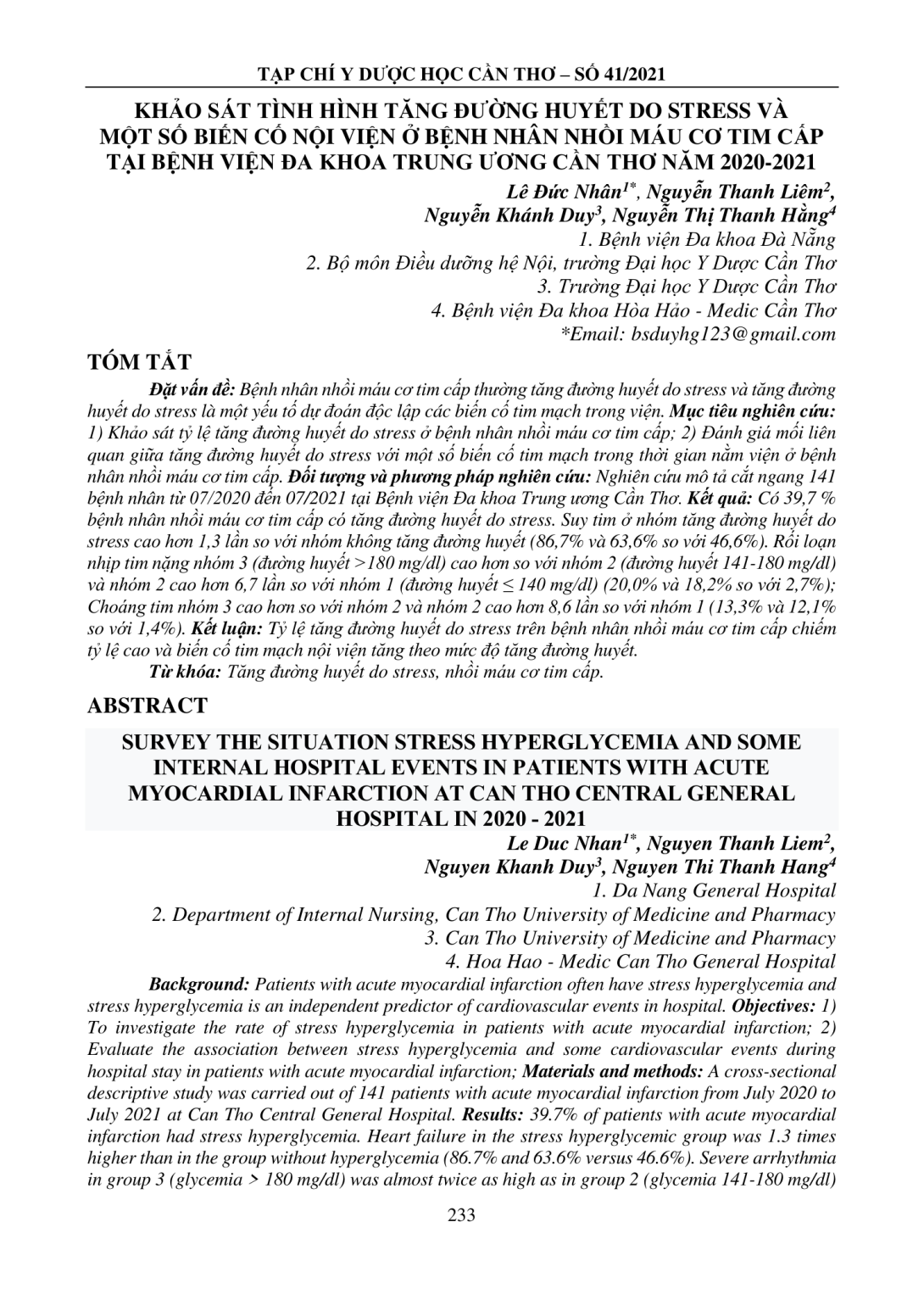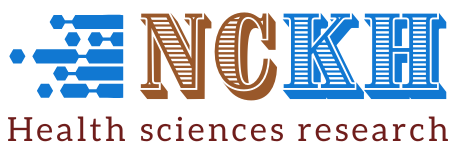
Bệnh nhân nhồi máu cơ tim cấp thường tăng đường huyết do stress và tăng đường huyết do stress là một yếu tố dự đoán độc lập các biến cố tim mạch trong viện. Mục tiêu nghiên cứu: 1) Khảo sát tỷ lệ tăng đường huyết do stress ở bệnh nhân nhồi máu cơ tim cấp; 2) Đánh giá mối liên quan giữa tăng đường huyết do stress với một số biến cố tim mạch trong thời gian nằm viện ở bệnh nhân nhồi máu cơ tim cấp. Đối tượng và phương pháp nghiên cứu: Nghiên cứu mô tả cắt ngang 141 bệnh nhân từ 07/2020 đến 07/2021 tại Bệnh viện Đa khoa Trung ương Cần Thơ. Kết quả: Có 39,7 % bệnh nhân nhồi máu cơ tim cấp có tăng đường huyết do stress. Suy tim ở nhóm tăng đường huyết do stress cao hơn 1,3 lần so với nhóm không tăng đường huyết (86,7% và 63,6% so với 46,6%). Rối loạn nhịp tim nặng nhóm 3 (đường huyết >180 mg/dl) cao hơn so với nhóm 2 (đường huyết 141-180 mg/dl) và nhóm 2 cao hơn 6,7 lần so với nhóm 1 (đường huyết ≤ 140 mg/dl) (20,0% và 18,2% so với 2,7%); Choáng tim nhóm 3 cao hơn so với nhóm 2 và nhóm 2 cao hơn 8,6 lần so với nhóm 1 (13,3% và 12,1% so với 1,4%). Kết luận: Tỷ lệ tăng đường huyết do stress trên bệnh nhân nhồi máu cơ tim cấp chiếm tỷ lệ cao và biến cố tim mạch nội viện tăng theo mức độ tăng đường huyết.
Patients with acute myocardial infarction often have stress hyperglycemia and stress hyperglycemia is an independent predictor of cardiovascular events in hospital. Objectives: 1) To investigate the rate of stress hyperglycemia in patients with acute myocardial infarction; 2) Evaluate the association between stress hyperglycemia and some cardiovascular events during hospital stay in patients with acute myocardial infarction; Materials and methods: A cross-sectional descriptive study was carried out of 141 patients with acute myocardial infarction from July 2020 to July 2021 at Can Tho Central General Hospital. Results: 39.7% of patients with acute myocardial infarction had stress hyperglycemia. Heart failure in the stress hyperglycemic group was 1.3 times higher than in the group without hyperglycemia (86.7% and 63.6% versus 46.6%). Severe arrhythmia in group 3 (glycemia > 180 mg/dl) was almost twice as high as in group 2 (glycemia 141-180 mg/dl) and group 2 was 6.7 times higher than that in group 1 (glycemia ≤ 140 mg/dl) (20.0% and 18.2% compared to 2.7%); Cardiac shock in group 3 was almost twice as high as in group 2 and group 2 was 8.6 times higher than that in group 1 (13.3% and 12.1% compared to 1.4%). Conclusion: The rate of stress hyperglycemia in patients with acute myocardial infarction accounts for a high rate and internal cardiovascular events increases with the degree of hyperglycemia
- Đăng nhập để gửi ý kiến
